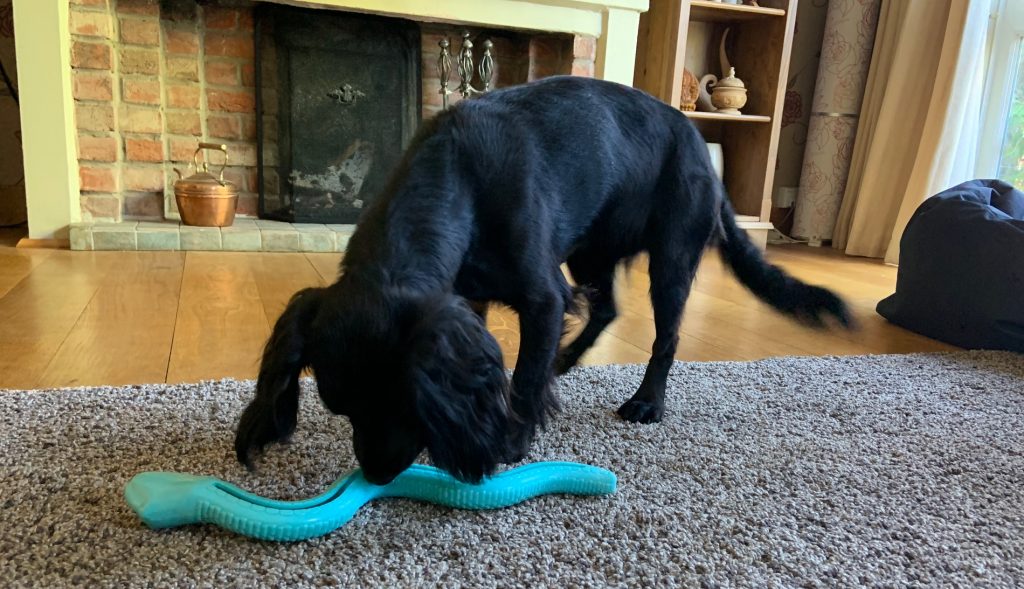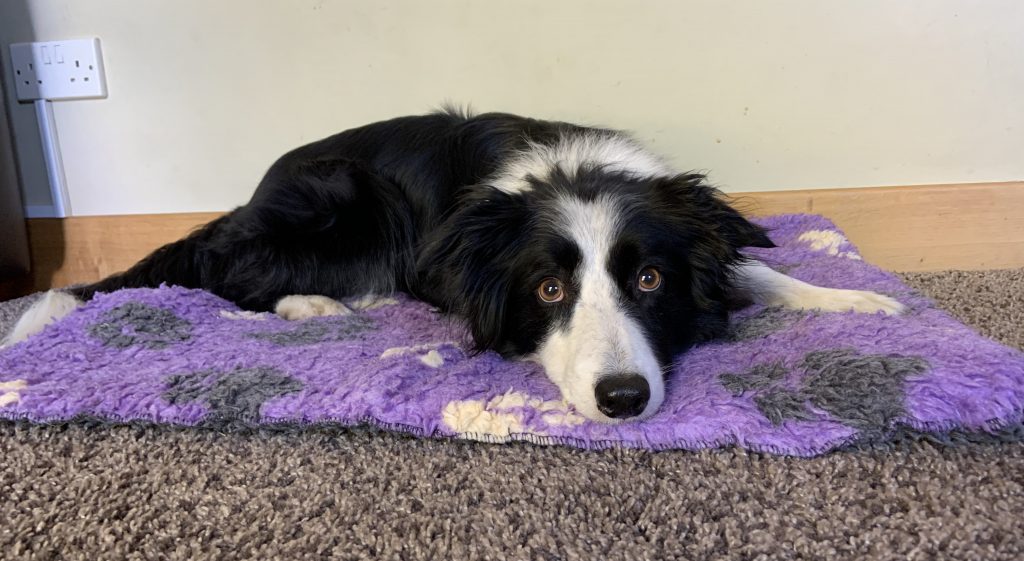By Evangelos Diamantakos, BSc (Hons), MSc, PhD Cand (SCAS Trustee)
One of the main concerns among dog owners and trainers/behaviourists regarding the impact of COVID19 is the potential for dog behavioural issues following an extended self-isolation period or lockdown. There is a common concern that many dogs may be affected by separation anxiety. During these unprecedented times, most dog owners are spending more time with their beloved dogs. However, this amazing opportunity may come with a possible cost. This ‘extended’ time of interaction owners have with their dogs is strengthening the bond between them and consequently the dogs’ ‘dependence’ on the owners’ presence and company. The aim of this article is to provide some useful training and behavioural tips to help prevent or manage possible separation related behavioural problems that dogs may develop.
First and foremost, try to maintain, as much as possible, the ‘normal’ daily routine followed before the self-isolation period. This may be easier said than done. However, where this is feasible, try to maintain the same times, frequency, duration and distance for dog walks and exercise. Moreover, if you used to have a dog walker, you could possibly ask them to take your dog out for walks, to maintain this routine, even if you don’t actually need their help since you are at home. Here it must be stressed the importance of following the COVID19 guidelines and measures issued by the Canine and Feline Sector Group with regards to handovers and dog walkers.

Provide your dog’s meals in different rooms/areas of your house during the day. Progressively, and if your dog feels confident, leave the room/area (e.g. initially for a few seconds that will gradually become several minutes) and let them eat alone. It would be rather important if during this process they could be fed through Kongs, puzzles, toys etc. which will keep them busy during your absence from the room. The aim of this feeding pattern is to train the dog to stay calm during your absence and associate various rooms/areas of your house with a pleasant activity. Moreover, aim to decrease the time that the dog stays with you in the same room during the day.
Train your dog to sit/down and stay at a distance from you and avoid any ‘unnecessary’ body contact with them during the ‘working day hours’ (the hours that you would normally be out for work). Body contact should ideally be avoided or decreased down to minimum levels during the hours that you would ‘normally’ be absent. You can continue to play/interact with your dog. However, try to interact more during the hours when you would normally be back home from work. If that is not feasible, then try to introduce time ‘gaps’ of inactivity during the day when you do not interact with your dog. The aim of the two previous mentioned tasks is to distance and avoid excessive physical contact and interaction during the ‘working hours’.
Try to maintain the sounds that exist in your house environment during this period of self-isolation/lockdown, when you will eventually return back to work. For example, if during the lockdown period you watch tv, listen to the radio, play a music instrument, talk on the telephone etc., it is important to record these sounds so that your dog can listen to them when you eventually return to work/’normality’. The aim of this suggested advice is to help your dog to cope with your future inevitable absence, while maintaining most of the environmental stimuli that existed during the period of self-isolation/lockdown.
Associate a bed or mat with the provision of a favourite treat/food to your dog when they stay/lie down on it. The initial aim of this activity/exercise is to make this item and the area around it, associated in the dog’s mind as a place where they receive something pleasant, a reward. The final aim is to establish this item/place as an area of relaxation and calmness. This will be achieved step by step. The time the dog has to wait before they get the reward can be gradually increased. Eventually, as progress is made, you can decrease the frequency of the food/treat provision and you can give it after longer time intervals (e.g. after 10, 15, 20, minutes of remaining on the bed/mat).

Even if you stay home during the COVID19 crisis, ‘pretend’ that you are leaving your house for work or shopping. Walk towards the front door, put on your shoes and coat, take your keys and bag, etc. The aim of this exercise is to get outside your door and stay there quietly, while your dog remains calm inside the house. However, this is not an easy exercise and you will only achieve it progressively over time. You are strongly advised to separate the various tasks of this exercise into small steps/phases where you will reward your dog for staying calm during very short periods of time (e.g. a few seconds). Gradually, and depending on progress, you can decrease the provision of food/treat you are using to reward the wanted behaviour and progressively increase the time of your absence (e.g. 5, 10, 15 minutes). You will need to repeat the various phases/steps of each task many times until your dog stops becoming anxious and remains relaxed. It is hugely important to always reward your dog by simply providing the treat/food and avoid petting, talking, or making high pitched voices at the same time. Such an association is something that we want to avoid since it would potentially increase the dog’s arousal levels and expectation to receive the reward and interact with you during your absence.
This advice aims to give a general overview of the exercises/tasks you should work on in an attempt to help your dog get back to ‘normality’ after the period of lockdown and/or self-isolation. Depending on your dog’s behaviour and temperament, you may need more specific advice from a behaviourist/trainer for additional, tailored support. Good luck!
